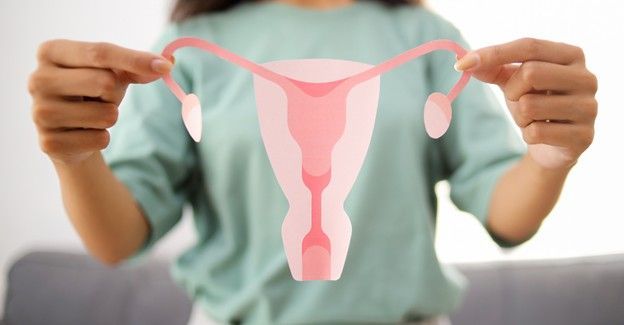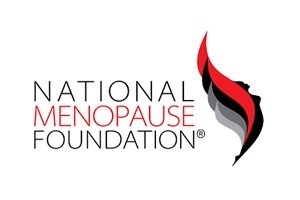September 2, 2025
The Overlooked Trio Behind Women's Hair Thinning

You’ve noticed it. Your hairbrush fills faster than it used to. Your ponytail feels thinner. The part in your hair looks just a bit wider than last year. For many women, hair thinning creeps in slowly, and it’s easy to dismiss it as “just stress” or “part of getting older.” But thinning hair can be a sign of deeper issues happening in the body.
Hair growth is influenced by a complex interplay of nutrients, hormones, and metabolic processes. When something disrupts that balance, hair is often one of the first areas to show the impact. Unfortunately, many conventional evaluations for women’s hair loss stop at a quick glance, a suggestion to take a multivitamin, or reassurance that “it’s normal.” What often gets missed are three of the most common—yet under-recognized—root causes: iron deficiency, thyroid dysfunction, and androgen excess.
Hair Thinning Due To Iron Deficiency
Iron is best known for its role in making hemoglobin, the protein in red blood cells that carries oxygen throughout the body. But its importance doesn’t stop there. Hair follicles are among the most metabolically active structures in the body, and they depend on a steady supply of oxygen and nutrients to maintain the hair growth cycle. Without enough iron, that cycle is disrupted.
One key thing to understand is that you can have low iron stores without being anemic. Many women with thinning hair have ferritin levels that are “within the lab’s normal range” but still too low to optimally support hair growth. Ferritin—a measure of stored iron—below 70 ng/mL is suboptimal for healthy hair maintenance.
Iron deficiency hair loss often presents as diffuse thinning across the scalp, rather than distinct bald patches. Women may also notice increased shedding during washing or brushing, a change in hair texture, or slower growth overall. The frustrating part is that these changes can begin months before a doctor would detect anemia on a routine blood panel.
Common reasons women develop low iron stores include heavy menstrual cycles, low dietary intake of iron-rich foods, frequent blood donation, gastrointestinal bleeding, celiac disease, inflammatory bowel conditions, or poor absorption due to low stomach acid. Even intense endurance exercise can contribute to iron loss through sweat and small amounts of gastrointestinal bleeding.
Addressing iron deficiency starts with identifying and correcting the cause, whether that’s dietary, digestive, or blood-loss related, while replenishing iron stores through food and, if needed, supplementation. Hair typically takes three to six months to show visible improvement after levels are restored, so patience is key.
Hair Thinning Due To Thyroid Dysfunction
If iron is the fuel for hair follicles, thyroid hormones are the regulators of the engine. The thyroid gland produces hormones—T4 and T3—that control the rate of metabolism in every cell, including those in the scalp. Healthy hair growth depends on an optimal thyroid hormone balance.
Both hypothyroidism (underactive thyroid) and hyperthyroidism (overactive thyroid) can cause diffuse hair thinning. The shedding is usually most noticeable across the entire scalp rather than in isolated areas, and the hair may become dry, coarse, or brittle. Eyebrow thinning—especially of the outer third—can be another sign of low thyroid function.
Hypothyroidism slows down the rate at which hair follicles regenerate, causing more hairs to enter the shedding phase (telogen) and fewer to stay in the growth phase (anagen). Hyperthyroidism, on the other hand, accelerates the cycle too much, leading to premature shedding before hairs are fully matured.
Thyroid-related hair loss often doesn’t occur in isolation. Women may also experience fatigue, weight changes, mood shifts, constipation or diarrhea, changes in menstrual cycles, and dry skin. But in some cases, hair thinning can be the first or only symptom.
One reason thyroid-related hair loss gets missed is incomplete testing. A basic TSH test (thyroid-stimulating hormone) may not be enough to detect subclinical dysfunction. Including free T4, free T3, reverse T3, and thyroid antibodies will give a fuller picture, especially when hair loss is unexplained.
Hair Thinning Due To Androgen Excess
When most people hear the word “androgens,” they think of testosterone. But in women, these hormones play a vital role in mood, muscle tone, libido, and even bone density. Problems arise when androgens, especially dihydrotestosterone (DHT), a potent derivative of testosterone, are present in excess or when hair follicles become overly sensitive to them.
This is the hormonal driver behind female pattern hair loss (androgenetic alopecia), which typically shows up as a widening part line or thinning on the crown, with the frontal hairline often preserved. Over time, affected follicles shrink (a process called miniaturization), producing finer, shorter hairs until growth stops altogether.
Androgen excess in women can be caused by conditions like polycystic ovary syndrome (PCOS), congenital adrenal hyperplasia, certain ovarian or adrenal tumors, or it can occur without a clear diagnosis. Other contributing factors include insulin resistance, obesity, and chronic inflammation.
Signs that androgens may be involved in hair thinning include acne, oily skin, excess facial or body hair (hirsutism), irregular periods, and difficulty losing weight. Women with PCOS, in particular, often experience a combination of these symptoms alongside scalp hair thinning.
Why These Causes Of Hair Thinning Are Overlooked
If iron deficiency, thyroid dysfunction, and androgen excess are so common, why do they so often go undiagnosed? There are a few key reasons:
- Symptoms are subtle or nonspecific – Fatigue, mood changes, and mild hair shedding are easy to dismiss or attribute to stress, busy schedules, or aging.
- Testing is incomplete – Many standard lab panels focus on ruling out obvious disease rather than assessing for optimal function, which can miss early imbalances.
- Siloed medical care – Hair loss might be addressed by a dermatologist, energy concerns by a primary care doctor, and menstrual changes by a gynecologist, without anyone connecting the dots.
- Time constraints – A brief office visit may not leave room to explore all possible contributing factors, especially if the patient isn’t aware of other subtle symptoms.
Taking a Functional Medicine Approach
From a functional medicine perspective, hair thinning is a symptom, not a diagnosis. That means the goal isn’t just to slow the shedding, it’s to uncover and address the root cause. Here’s how that might look:
●
Detailed health history – Reviewing not only hair loss patterns but also menstrual history, energy levels, digestion, diet, stress, and other systemic clues.
●
Comprehensive lab testing – Going beyond standard panels to include ferritin, full thyroid panels, and androgen profiles when warranted.
●
Root-cause investigation – Asking why a lab result is abnormal. For example, if ferritin is low, is it due to poor intake, absorption issues, or chronic blood loss?
●
Targeted nutrition and supplementation – Replenishing deficiencies and supporting hormonal balance with individualized plans.
●
Lifestyle and environmental support – Managing stress, improving sleep, reducing toxin exposures, and supporting metabolic health.
Hair thinning in women is rarely just about the hair. More often, it’s a signal that key systems in the body like nutrient stores, thyroid function, and hormonal balance are out of sync.
If you’ve been told your labs are “normal” but your hair tells a different story, it may be time to explore these often-overlooked causes.
References
Carmina, E., Azziz, R., Bergfeld, W., Futterweit, W., Huddleston, H., Lobo, R., ... & Yildiz, B. O. (2019). Female pattern hair loss and androgen excess: A report from the multidisciplinary androgen excess and PCOS committee. Journal of Clinical Endocrinology & Metabolism, 104(7), 2875–2883. https://doi.org/10.1210/jc.2019-00221
Ho, C. H., Sood, T., & Zito, P. M. (2024). Androgenetic Alopecia. In StatPearls. StatPearls Publishing. https://www.ncbi.nlm.nih.gov/books/NBK430924/
Kantor, J., Kessler, L. J., Brooks, D. G., & Cotsarelis, G. (2003). Decreased serum ferritin is associated with alopecia in women. Journal of Investigative Dermatology, 121(5), 985–988. https://doi.org/10.1046/j.1523-1747.2003.12540.x
Sinclair, R. D. (2015). Diffuse hair loss. International Journal of Dermatology, 54(10), 1112–1124.
Bertoli MJ, Sadoughifar R, Schwartz RA, Lotti TM, Janniger CK. Female pattern hair loss: A comprehensive review. Dermatol Ther. 2020 Nov;33(6):e14055. doi: 10.1111/dth.14055. Epub 2020 Aug 31. PMID: 32700775.
Rushton DH. Nutritional factors and hair loss. Clin Exp Dermatol. 2002 Jul;27(5):396-404. doi: 10.1046/j.1365-2230.2002.01076.x. PMID: 12190640.










